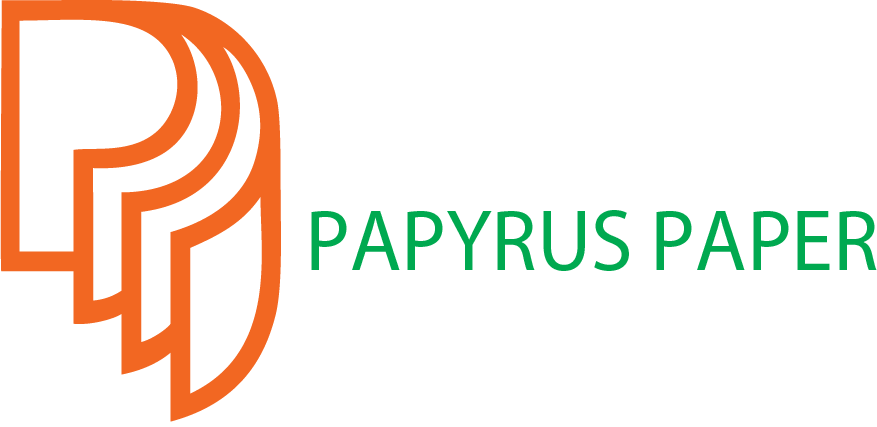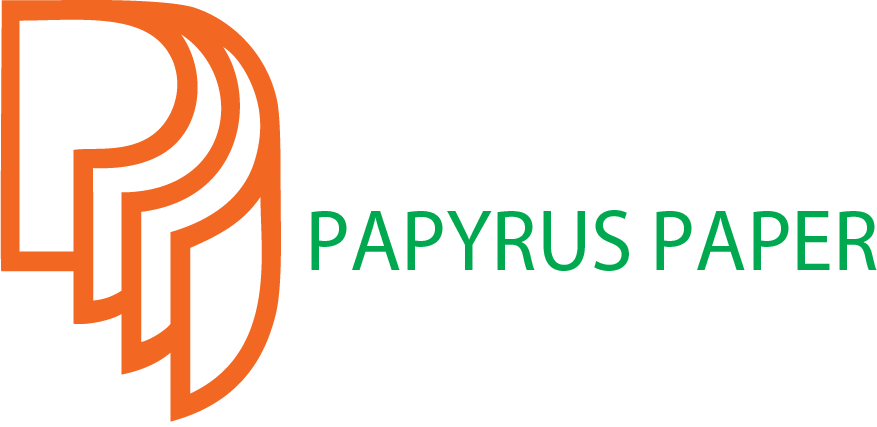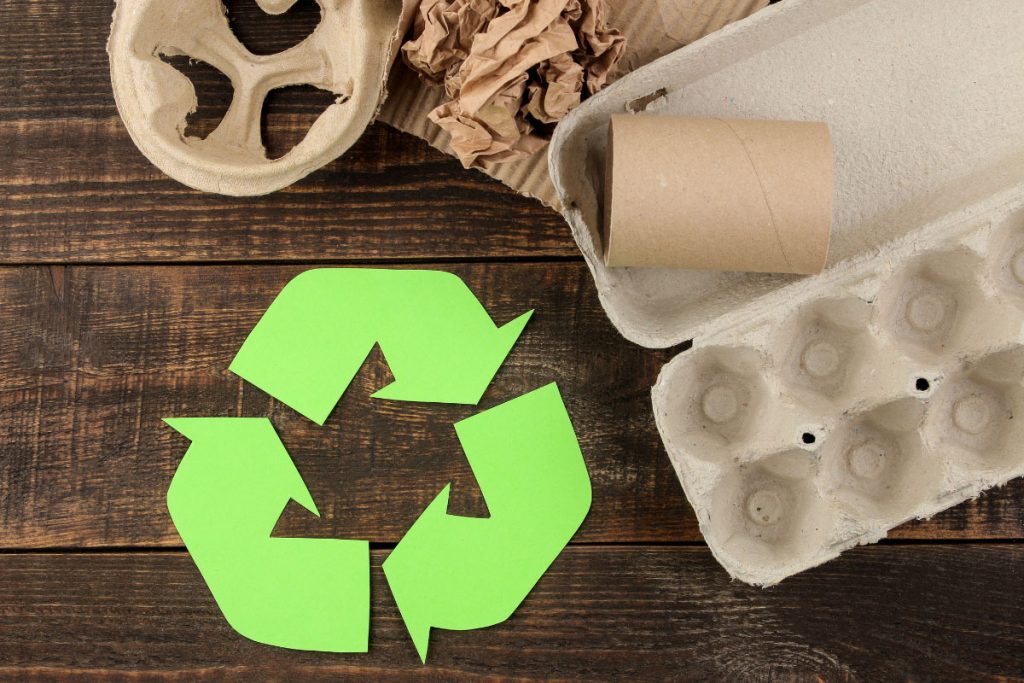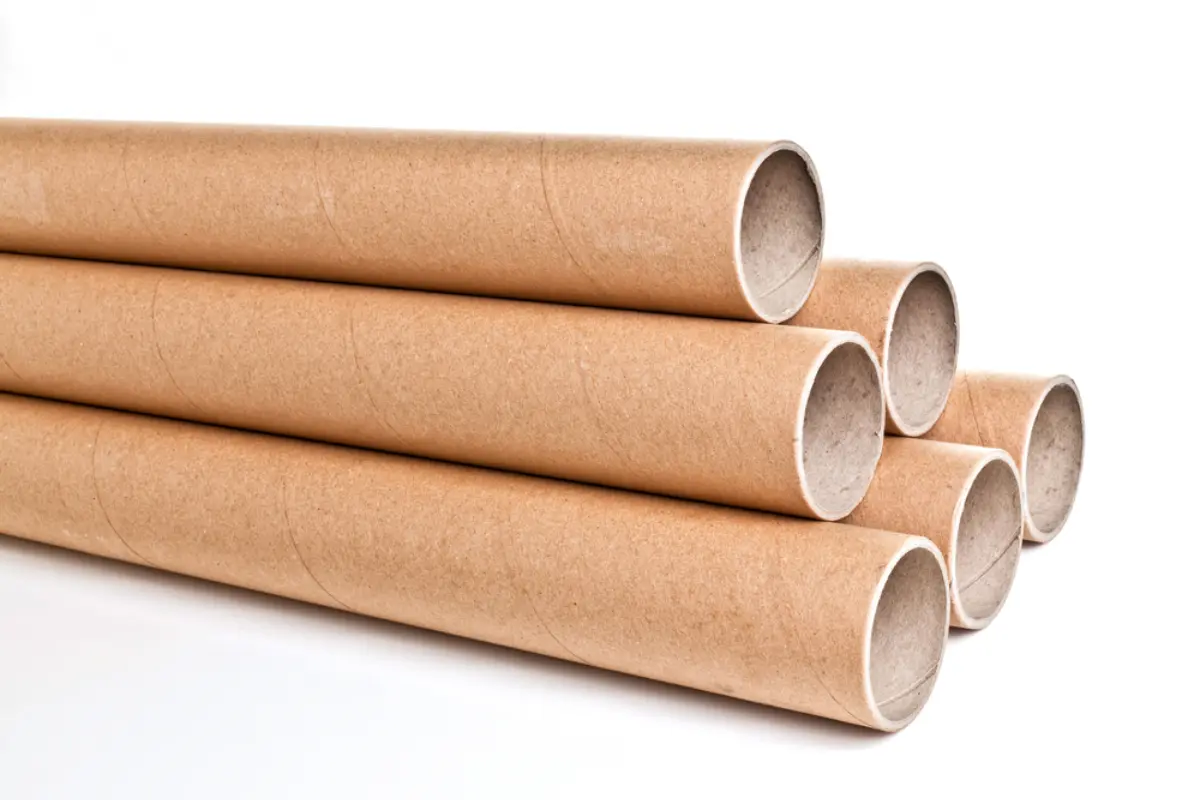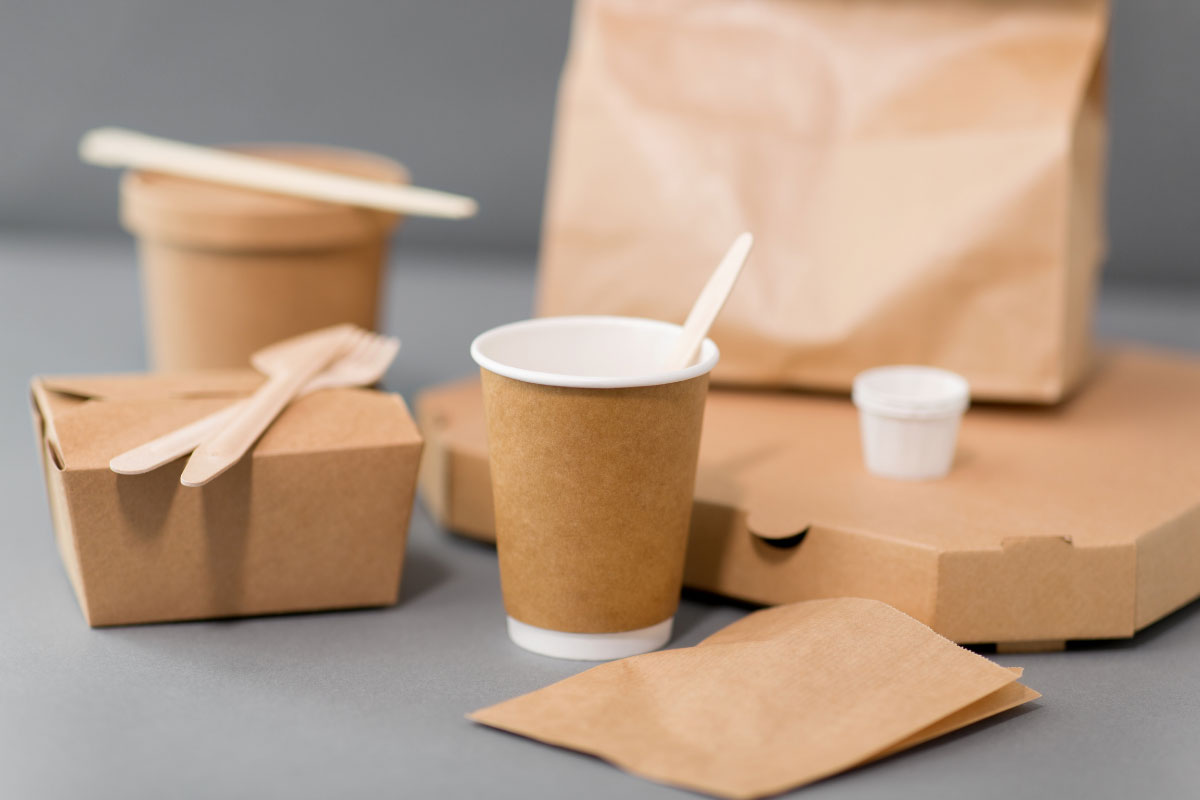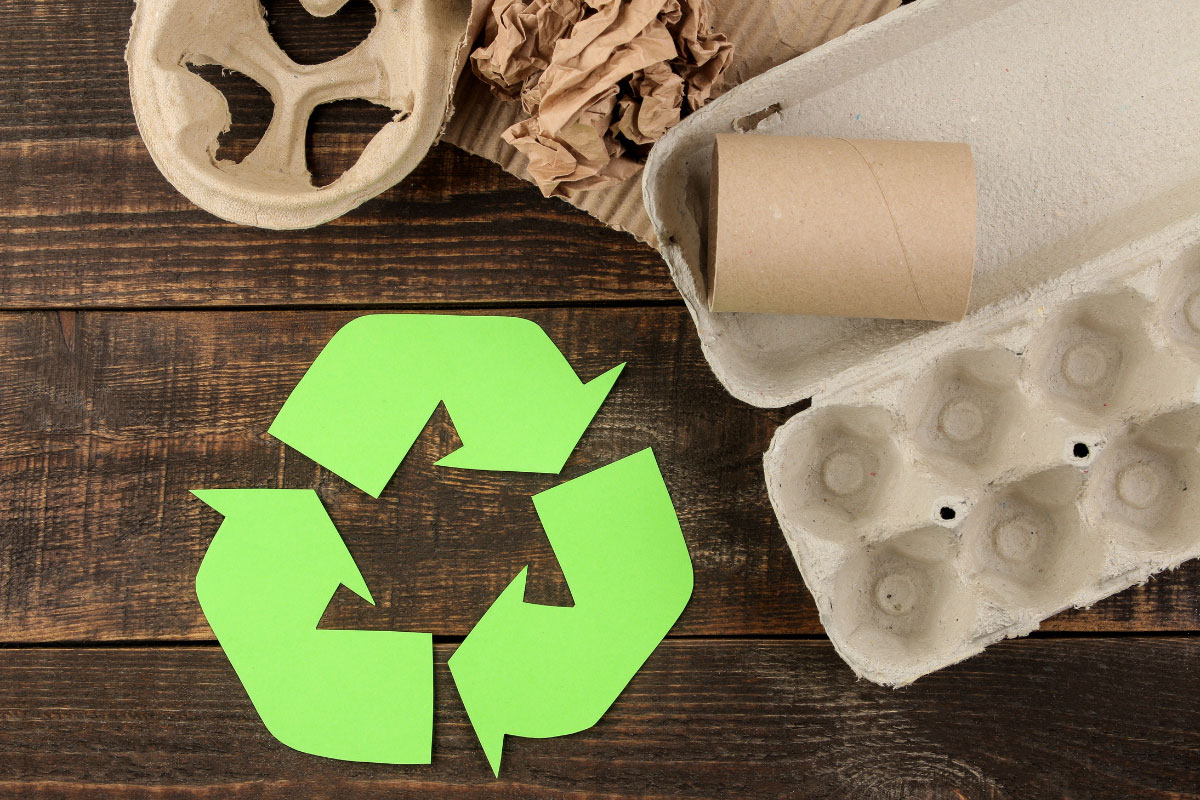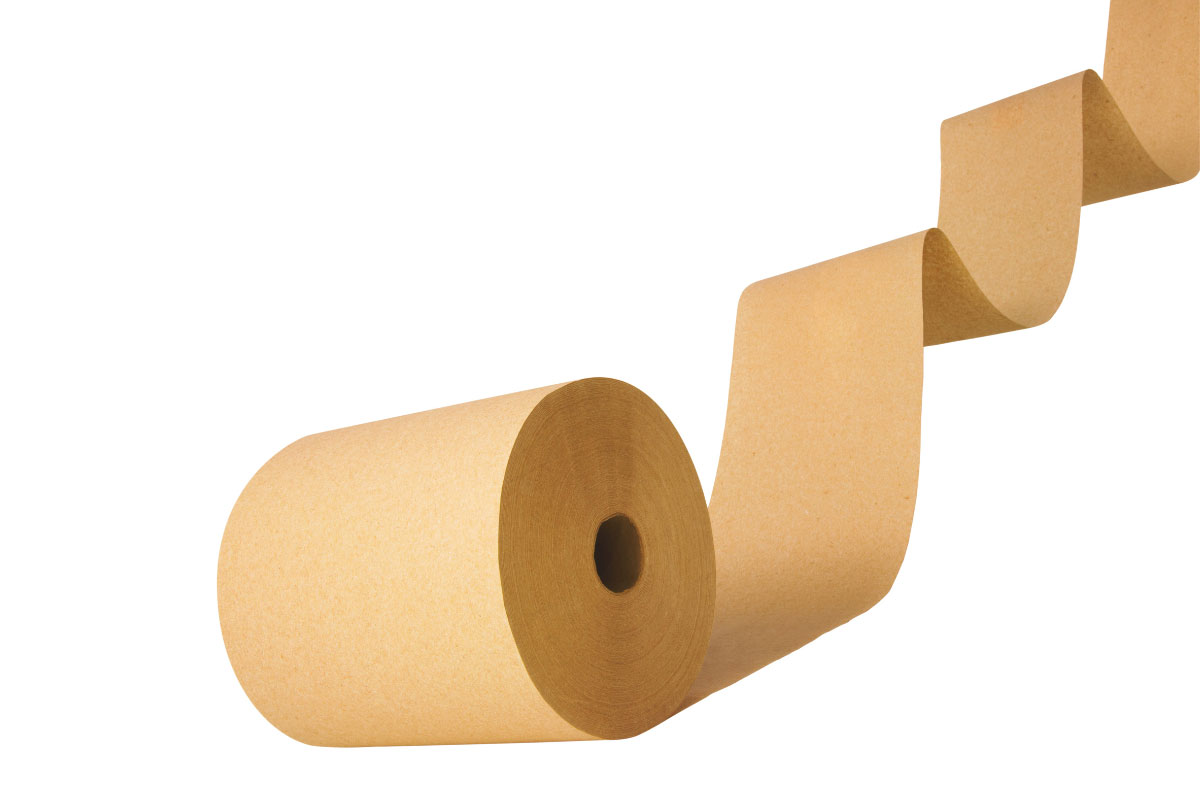In the process of recycling waste paper, instead of destroying it, it is re-entered into the consumption cycle and as a result, waste production is reduced. The use of waste paper causes fewer trees to be cut down and the environment is less damaged. On the other hand, paper emits methane (carbon) when it decomposes, so by recycling it, less carbon is emitted into the air. Of course, another advantage of these papers is that they are easier to produce, which makes them cheaper compared to white paper, because they have fewer machines and simpler production processes. In this paper, we discuss the paper recycling method, its uses, advantages and disadvantages, and factors affecting the price of recycled paper.
What is recycling?
In order to make the matter more clear, before explaining the process of paper recycling, we will first examine the concept of recycling. “Recycling is the process of collecting and processing materials that are discarded as waste if not reused. Recycling is beneficial to society and the environment because:
- It reduces the amount of waste sent to landfills and incinerators.
- It conserves natural resources such as wood, water and minerals.
- It increases economic security.
- By eliminating the need to produce new resources, it prevents pollution.
- It creates new jobs in recycling and production industries.
- It reduces energy consumption.
Many materials can be recycled, and their reuse is particularly important, such as all kinds of plastic, aluminum, glass containers, clothes, and steel. But one of the most important materials that have always been given attention to recycling is paper. The production of recycled paper ultimately causes fewer trees to be cut down and fewer forests to be destroyed.
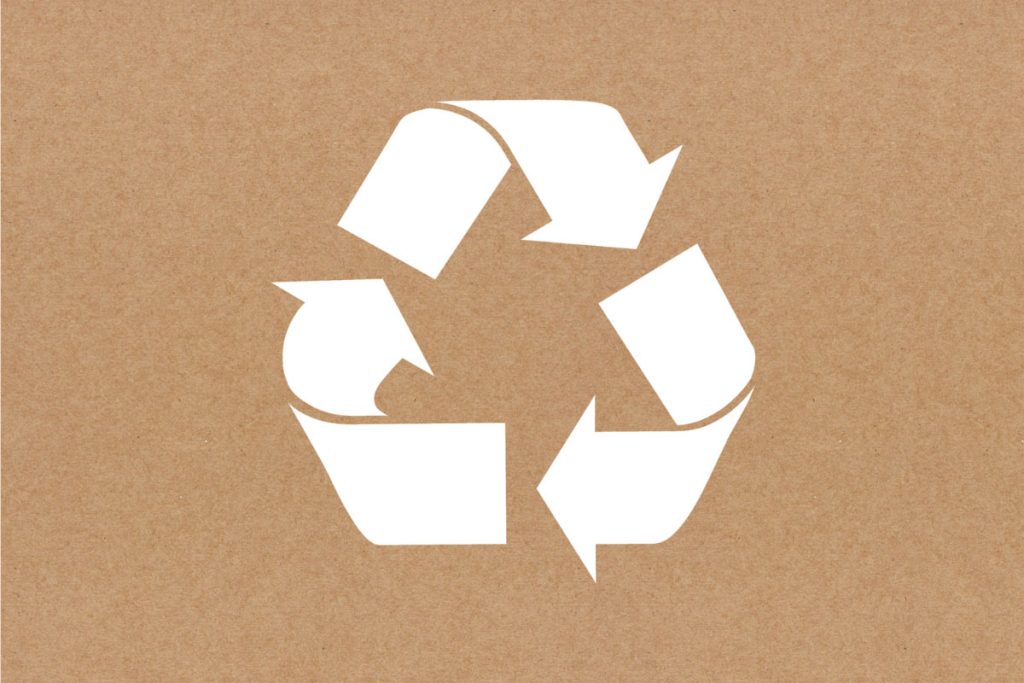
Why should we recycle paper?
Above we mentioned the advantages of this work. The production of products from recycled paper makes the final costs of the consumer decrease significantly. Paper recycling helps reduce greenhouse gas emissions. Also, these papers consume 70% less energy and water than the production of new paper products from trees. Recycling just one ton of paper saves 17 trees as well as 2.5 cubic meters of landfill space.
In the process of producing paper from trees, paper factories use toxic chemicals, which are one of the worst pollutants in production. On the other hand, when paper decomposes in the ground, it releases methane, a strong greenhouse gas and one of the main causes of global climate change. Paper recycling reduces all these processes and reduces air pollution by 74%.
How is paper recycled?
The recycling process depends on the type of device and raw materials, but a number of steps are the same in all methods, which we describe below.
Three categories of paper are used as raw materials for making recycled paper: factory waste, pre-consumer waste and post-consumer waste. All materials that are removed from the production cycle in paper and cardboard factories, such as the edges of paper rolls after cutting, can be reused. There are also many cases where a product has been manufactured but returned before reaching the consumer. Paper packages, notebooks and newspapers, etc. are also consumer products that can be recycled. All papers are taken to a recycling center where contaminants such as plastic, glass or other waste are removed from them.
In the next step, the paper is classified into different grades. The more paper is recycled, the lower its quality. The grade of paper determines what type of product it can be used in.
After sorting, they store the papers and prepare them for sending to the machine. In the next step, the papers are transferred to the mill for processing.
Milling machines produce pulp by crushing paper into small pieces. A mixture of paper, water and chemicals is heated and the paper pieces are converted into fibers.
The resulting mixture is then pressed through a machine to remove adhesives and other remaining contaminants.
In the next step, the dough is rolled in a cone-shaped cylinder to clean it and remove any ink.
The dough is sprayed through the machine on a conveyor belt. Water drips from the belt plate and the paper fibers stick together.
Hot metal rollers finally dry the paper and place it on large rolls that can be used to make other products.
Which papers can be recycled?
Paper cannot be recycled indefinitely. With each recycling, the fibers become shorter. After 5 to 7 times of processing, the fibers become too short to produce new paper and we need to add new fibers. In general, many types of paper can be recycled, including white office paper, newsprint, colored office paper, cardboard, white paper for notebooks and receipts, magazines, catalogs, and phone books. Meanwhile, there are products that cannot be recycled, due to the materials added to them during the production process or the use they have had. Types of paper that cannot be recycled include: coated and treated paper, paper with food waste, juice and cereal boxes, paper cups, paper towels and tissues (toilet), and paper or magazine with multiple layers of plastic (laminated). .
Uses of recycled paper
Recycled paper is used in various forms and products. Thousands of examples can be mentioned for the use of these products, in fact, no industry can be named in which these papers have not found their way, even in the production of disposable beds and medical products, recycled paper is also used. Its main uses are listed below:
- Printing and copying industry
- Painting and art
- The posters
- Books
- Toilet paper
- Box of medicine and food products
- Packaging of agricultural products
- Cardboard
- Furniture and household appliances industry
- Newspapers and magazines
- Phone books
- Flooring and wall papers
- Container separator and protector
How many times can paper be recycled?
Primary paper is made of long fibers, as mentioned above, every time the paper is recycled, the fibers become shorter and harder to recycle next time. The average number of times that paper can be recycled is about five to seven times. After that, the fibers are too short to be turned into copy paper. At this stage, of course, recycled paper can be used to produce newsprint or egg cartons and similar items. Of course, every time the paper is recycled, some additives and virgin wood fibers are mixed with the pulp to improve its structure and actually increase the number of recycling times.
Disadvantages of recycled paper
Up to this part of the Kaveh papyrus paper article, we discussed the advantages of this work, but this process also has disadvantages:
The implementation and maintenance of recycling equipment is expensive.
In the recycling process during paper production and transportation of raw and manufactured materials, greenhouse gas is produced (of course, this amount is very small compared to the production of paper from trees and natural materials).
Usually, the recycled product is of lower quality. (This is not true for metals, which are infinitely recyclable.)
Pollution may enter the raw materials during paper production.
The budget of recycling industries and investment in it is small and little attention is paid to its importance.
What is the price of recycled paper?
The price of recycled paper is very variable and depends on various factors. If you intend to buy these papers, you should know that you will pay different amounts based on the size of the order, the type of paper and the dimensions of the paper.
- Order Size: The more size you order, the lower the final cost you will pay. Bulk purchase of these products makes paper cheaper.
- Raw materials: The type of paper and cardboard used in making the final product is the most important factor in determining the price and quality of the manufactured product. If better and higher quality papers are used for production, the final product will be more expensive.
- Sheet dimensions: Paper sheets are produced in different widths. Of course, the major paper is sold based on the two factors of width and weight.
- Grammage: It doesn’t matter what paper you buy, ultimately grammage is an important factor that you must pay attention to. The higher the grammage, the thicker and stronger the paper becomes.
- Additional: In the production process of these papers, if no material is added to it, we have Iranian liner paper, which has a low price. Of course, in the production process, if wood fibers are added to the pulp, we have kraft paper at the end. Of course, the additive is not only limited to fibers, it is possible to produce bright and white paper by adding color and chemicals.
Kaveh Papyrus Paper is a producer of packaging paper and cardboard from recyclable materials. Our mission is to produce green products and reduce damage to the environment. You can click on the button below to view Papyrus products. You can also contact the numbers listed on the site to receive advice, pre-invoice and purchase liner paper, cardboard tube paper, liner test paper, etc.
